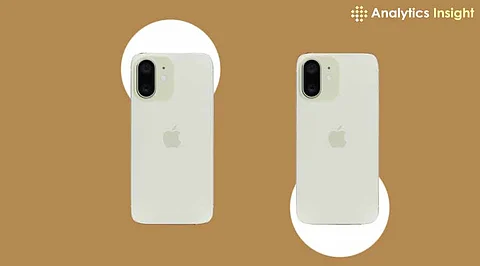

Apple’s perspective has always been streamlined, adopting a straightforward design format. However, that has shifted with the launch of the iPhone 17 design. In a surprising twist, Apple's latest models boast distinct builds, leaving many to wonder: What prompted the tech giant to shift its strategy?
For most of the decade, all iPhone models looked quite similar. They only differed in size and hardware configuration. However, with the new iPhone series, the marketing strategy is different. All models—base, Pro, and Ultra—have a different build, not just the configuration. Apple is breaking its trend by showing how smartphone trends are changing, with brands focusing more on user-specific needs.
According to experts, Apple’s intention seems to be targeting a larger spectrum of customers. While some people dream of sleek design and lightweight models, others need something more robust. Therefore, Apple's innovation is shifting its design strategy by focusing on making unique designs and functions. For various users, Apple has uniquely designed each detail, from cameras to battery life and materials. This could be a significant element in iPhone history.
Right now, Apple is experimenting with new materials. The base iPhone 17 uses an advanced aluminum alloy, while the pro version features a titanium frame for more strength and durability. Also, the Ultra’s ceramic backing most certainly makes it the strongest iPhone ever.
Reports claim that titanium has a 30% better strength-to-weight ratio than stainless steel. Ceramic backs are also said to improve scratch resistance, which makes this change a great example of Apple focusing on allowing every model to stand out in functionality and design. This approach moves beyond minor upgrades, offering an exciting and fresh direction for future iPhone designs.
The iPhone 17 models don’t just differ in material—they also have different displays.
The standard model has a 6.1-inch OLED panel.
The Pro version includes a 6.7-inch LTPO display with a 1Hz to 120Hz refresh rate.
The Ultra model features a new MicroLED panel with superior brightness and color accuracy.
Each screen provides a different purpose. Moreover, the Pro and Ultra models cater to professionals and tech enthusiasts.
The iPhone 17 does not share the same camera features. Every model has its configuration.
There is a dual-lens camera system on the standard iPhone 17
For better long-distance photography, the Pro version introduces a periscope zoom lens.
The Ultra model boasts a quad-lens system with AI-powered enhancements.
Apple's upcoming approach might persist in future versions. Personalization and uniqueness could become standard practice. Rather than minor yearly enhancements, users might experience significant transformations with every new release.
The iPhone 17 lineup looks nothing like its predecessors—or even like each other. Every year, Apple comes up with a new tech evolution that offers a unique experience for people. Apple is setting a new standard for mobile devices and influencing upcoming smartphone designs in the market.
